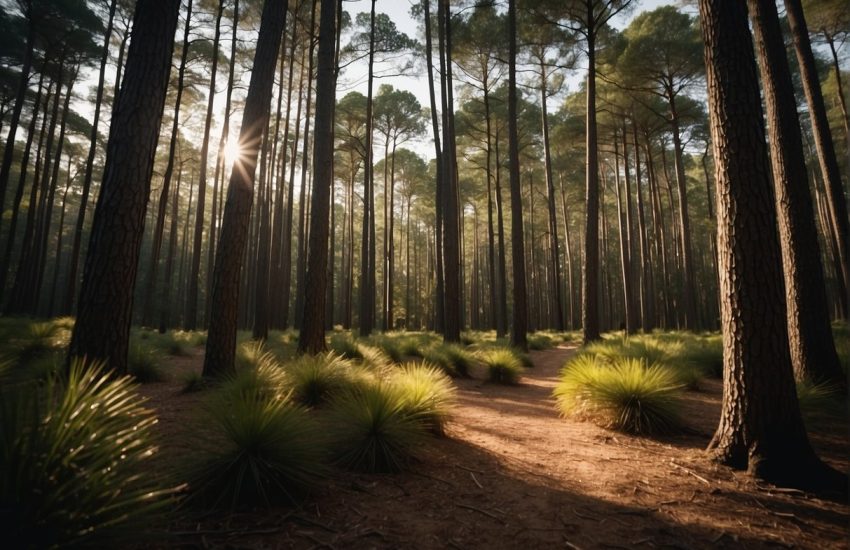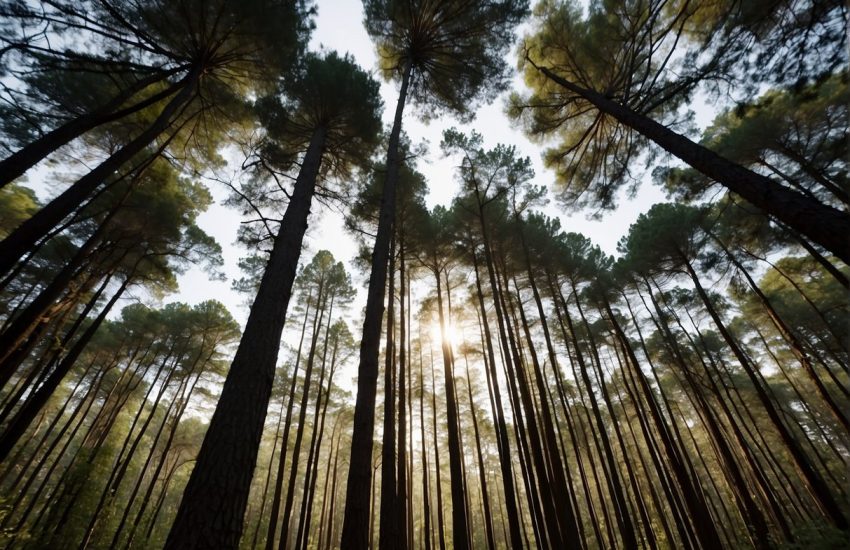Pine Trees in Alabama: A Comprehensive Guide to Species and Locations
Pine trees are one of the most common types of trees found in Alabama. They are known for their tall stature, evergreen needles, and ability to thrive in a variety of environments. The state’s warm climate and ample rainfall provide ideal conditions for pine tree growth, making them an important part of Alabama’s ecosystem.

There are several species of pine trees found in Alabama, including the longleaf pine, loblolly pine, and slash pine. Each species has its own unique characteristics and is adapted to different types of soil and moisture levels. The longleaf pine, for example, is known for its long needles and ability to withstand wildfires, while the loblolly pine is prized for its fast growth and straight trunk.
Despite their importance to the state’s environment and economy, pine trees in Alabama face several challenges, including invasive species, disease, and deforestation. Conservation efforts are underway to protect these valuable trees and ensure their continued growth and survival.
Pine Trees in Alabama: An Overview
Pine trees are a ubiquitous sight across Alabama’s diverse landscape, spanning from the southern coastal plains to the northern Appalachian Mountains. Alabama is home to several native species of pine trees, each with unique characteristics and habitats.
Native Species and Their Habitats
The most common pine trees in Alabama are Loblolly Pine, Longleaf Pine, Eastern White Pine, Shortleaf Pine, Sand Pine, and Pond Pine. Loblolly Pine is the most abundant species and is found throughout the state. Longleaf Pine, on the other hand, is mainly found in the southern part of the state, while Eastern White Pine is found in the northern part of the state.
Shortleaf Pine is found in the upland areas of the state, and Sand Pine is found in the coastal areas. Pond Pine is found in the wetlands and low-lying areas of the state. Each species has unique characteristics and adapts to different habitats, making them an integral part of Alabama’s diverse ecosystem.
Ecological Importance and Uses
Pine trees play a crucial role in the ecology of Alabama. They provide habitats for a variety of wildlife, including birds, mammals, and insects. Pine trees also play an important role in soil conservation, preventing soil erosion and maintaining soil fertility.
In addition to their ecological importance, pine trees are also an important economic resource for Alabama. The state’s timber industry is a significant contributor to the state’s economy, and pine trees are a major source of timber. Pine trees are also used for paper production, construction, and as a source of fuelwood.
Overall, pine trees are an essential part of Alabama’s natural and economic landscape. Their unique characteristics and adaptability make them an important resource for the state and a vital component of its diverse ecosystem.
Conservation and Management
Challenges and Protective Measures
Pine trees are an important part of Alabama’s ecosystem, providing habitat for wildlife, maintaining soil health, and contributing to the state’s timber production. However, these trees face several challenges such as invasive species, disease, and climate change.
To protect pine trees, the Alabama Forestry Commission has implemented various protective measures such as prescribed burning, pest management, and reforestation programs. These measures help to maintain healthy forests, prevent wildfires, and promote biodiversity.
Sustainable Forestry and Economic Impact
Sustainable forestry practices are crucial for the long-term health of Alabama’s forests. These practices include selective harvesting, reforestation, and protection of sensitive areas. By implementing sustainable forestry practices, the state can ensure a steady supply of timber while also preserving the ecosystem and promoting biodiversity.
The forestry industry is a significant contributor to Alabama’s economy, generating billions of dollars in revenue and providing thousands of jobs. Sustainable forestry practices not only benefit the environment but also have a positive economic impact on the state.
In conclusion, conservation and management of pine trees in Alabama is crucial for maintaining a healthy ecosystem, promoting biodiversity, and supporting the state’s economy. By implementing protective measures and sustainable forestry practices, the state can ensure the long-term health of its forests while also reaping economic benefits.


